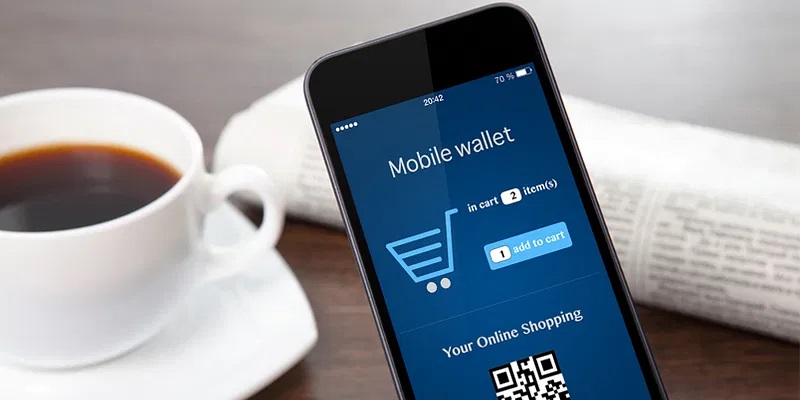Billed as the future of real-world payment technologies, the jumpstart of digital payment wallets has put huge pressure on many shops to embrace e-wallet payments. Although digital wallets are around for years, people have slowly noticed the numerous benefits that they provide, such as security, speed, and convenience.
However, there are still some misconceptions regarding digital wallets albeit they are more secure than credit cards, security concerns remain the main obstacle to wallet adoption by consumers.
When you provide mobile financial services, security is vital. Money transactions need to be safe and secure from end to end. Let’s discuss why you need to strengthen your digital wallet security:
Why strengthen your mobile wallet security?
COVID-19 has unexpectedly impacted the world. It has forced most of the consumers to choose digital payments. With social distancing becoming the necessity in times of COVID-19, consumers have no option other than going for digital modes of payments.
The increase in digital payments has led to an increase in cyberattacks and frauds. This has created the necessity for a secure digital wallet. Mobile money payment solution are often secured with various robust technologies like encryption, firewall safety,tokenization, passwords, biometrics, out-of-band authentication, one-time password (OTP) via SMS, security questions.
After understanding the need for security in digital payments, let’s see how can you increase your mobile security:
How to strengthen your mobile wallet security?
Read these seven steps to know how you can secure your digital wallet :
1. End to end encryption
Sometimes misconfigurations are often generated in the transport layer at any tier of the payment processing network architecture. End to End Encryption is an excellent method that compensates the risk of insufficient transport layer protection. Utilization of technologies such as SSL certificate pinning helps further safeguard against Man-in-the-Middle attacks.
The other layer is data encryption supplied by a merchant’s payment processor using the Payment Card Industry (PCI) validated methods. Any time a consumer pays by mobile wallet, a one-time coded version of the card is used to authorize payment, valid only for the current transaction.
Hackers can’t access consumers’ sensitive data because the financial information isn’t transferred at the time of the transaction.
2. Improper usage habits!
The way you use your mobile phone can be problematic regarding security in digital payments app. The fraudsters can use the website version of your mobile phone to make purchases or payments.
As per statista, Google Chrome browsers can be vulnerable to making payments through mobiles on android phones. That’s why it is essential to use browser detection,which protects you from the frauds carried out through insecure mobile browsers. Instead of such browsers, look for secure mobile payment apps that come with an updated version. Also use PIN locks or other security features of your phones if needed.
3. Secure your payments by tokenization
It’s true that anytime you broadcast data across a mobile or wireless network you’re accepting the danger of that data being intercepted. However, secure e-wallets utilize various security measures that are safer and more efficient than a physical payment. You can use randomly generated payment tokens to make sure that your card information isn’t being seen by merchants or by the wallet providers.
4. Insecure communication channels with POS
The data in transit for authorization and processing of payments falls under the control of different parties which includes the mobile payment app developers, the merchant, the card issuer or the card payment network. Sometimes it happens that these communication channels are not clear or maybe insecure.
You need a trusted VPN channel from the POS segment located in the retail stores to the data center servers, which guarantees the confidentiality of all data in transit. The secure communication channels between the retail POS segments and the required backend support architecture will secure the communication channels by making the POS traffic critical.
5. Secure your app from malware attacks
Attackers could access sensitive data using side channels like by installing malware on the device to control it remotely or stealing data from it. Preventive measures include application isolation such as sandboxing and virtualization monitoring of mobile applications on the device.
Detection measures include Jailbreak detection, malware detection and secure provisioning of the mobile application and third-party libraries employed by the application. Installing updates for all other software on the pc or mobile is additionally significant to remain the wallet environment safer.
Use security applications like firewalls, virus and malware detection and intrusion-detection systems for detecting and removing threats.
6. Improper Session Handling
Improper session handling is usually caused by failing to validate the session at logout, poor implementations of the session expiration,tokens/cookies issues, replay and hijacking of the sessions in transit between client and servers.
It can compromise the security in digital payments or wallet. For preventing such issues,various security requirements like randomness, freshness to prevent replay,limited validity and expiration time can be set additionally to the standard controls ensuring that the tokens themselves are sent over encrypted transport.
7. Beware of app cloning
The risk that your account numbers get stolen is little, but it grows if you add cards to your mobile wallet while using an unsecured public Wi-Fi network. The hackers who lurk on such networks can re-create, or “spoof,” a mobile wallet’s registration system on which you’ll enter your card’s data.
You can solve this by loading your cards into your mobile wallets, using your personal password-protected Wi-Fi network. If you would like to manage your mobile wallet from a public place consider fixing a private VPN for your phone.
Final words
In this blog, we saw various sorts of threats and solutions that a mobile payment app might face. Digital wallet solutions are still in its growing stage and with the time you’ll see it becoming more fast, secure, and convenient. But you don’t have to wait till then, you just have to understand all the above threats and solutions properly to return up with a strong mobile payment system.
